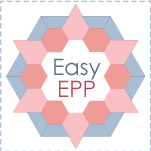Stitched Sunday – The Cretan Stitch
'
Today brings us our last stitch tutorial and the final page (for now) for your stitch book. Next week I will begin the instructions for you to make up your book to hold all of your wonderful practise pages and designs – should you wish to.
A reminder of your requirements to make the book can be found on this post here – you have one more week and can still order them if you want yours to look the same as mine.
So, to today’s stitch – the mighty Cretan!
also known as Persian stitch and longarmed feather stitch – sometimes known as quill stitch when it is stitch as a long line.
Traditionally used by the women of Crete on clothing – hence its name.
The stitch can be used within a shape – like a leaf – or on parallel lines as decoration. It can be worked closed or open giving many different looks.
so- how to do it?
It is actually quite similar to the Herringbone stitch except the ‘hat and boot’ is vertical rather than horizontal. It may be useful to start with two guide lines.
Bring the needle up at A, down at B and back up at C – the thread is under the needle B &C are a little vertical stitch.
pull through until firm and the needled thread is distorting the first stitch – putting that little bend in there.Now take the little vertical stitch at the top of your row.- again make sure the thread is under the needle
continue like this to make a nice even row of stitches.
to vary this stitch we can do several things- first change the distance between this point
and this point
making them very close makes this tight stitch sometimes referred to as quill stitch – it looks like a lovely little knotted stitch doesnt it?
or you can change teh size or your little vertical stitch – the amount of threads you pick at this point of the stitch (between B&C)
The closed quill sample above uses quite large vertical stitches – actually to the middle of my two lines so both the top and the bottom stitch meets in the middle. But if you only took a teeeny tiny stitch here – even just one or two threads you get a different look again – of course you can be spaced apart or close together for even more variations.
If you space them apart you can use a contrast thread and do another row over the top – you will sometimes see 3-4 different threads used over the top and in between well spaced stitches.
You can see lots of examples and inspiration on my pinboard here.
Our practise page today is a little sampler similar to our Herringbone page. Firstly have a practise changing spacing and stitch size and these horizontal lines to help.
For our design I have put just guidelines (Circles) on the pattern sheet and then filled them like this:
Using the centre two circles and the purple thread I stitched quite closely with an equal stitch length for my vertical stitches – ie, the ‘C’ point sat in the middle of my two lines. (like this example)
Of course because you are going around a circle the points on the inner circle are a little closer than the points on the outer circle. I then stitch colonial knots on every second inner point and every outer point of my Cretan stitches.
Using the next two lines I stitched a Chevron stitch in the pink thread. Using green I stitched a lazy daisy between each outer ‘v’ and fly stitch over each outer hat. A purple French knot was placed in between each fly ‘v’. on the inner side I stitch two pistil stitches in hot pink.
Using the next two lines and the purple thread I stitched a row of quite widely spaced Cretan stitch. I think swapped to a pink thread and stitched another row over the top. Using the green thread I stitched a running stitch around the outer edge between each stitch.
Using the last two outer circle guides I stitched a large Cretan stitch in the purple thread. Think of dividing the space into four equal sections to judge the size or your little vertical stitches.
I then used a green thread and stitched a fly stitch over the end of each inner stitch – joining the fly stitches at the half way point. I add a colonial knot at the end of each fly stitch using the hot pink. A lazy daisy was placed between each outer ‘v’ of the cretan stitch and finally a green thread and running stitch was worked over the outer ends of the Cretan stitch.
Which then gave me this! Isn't it delicate and pretty, not sure what I’d use if for but for now its a page in my stitch book.
You can download your pattern page here Download Cretan stitch
I do hope you have enjoyed either learning from scratch or maybe challenging your embroidery skills a little further. I’ll be back next week with those gorgeous woollen hearts to embellish with our newly learnt stitches and make into a stitch book to savour and pass on to your children, grandchildren and more to keep the love of embroidery alive.
hugs for today and happy stitching
Helen
'

Items 1 to 6 of 11 total